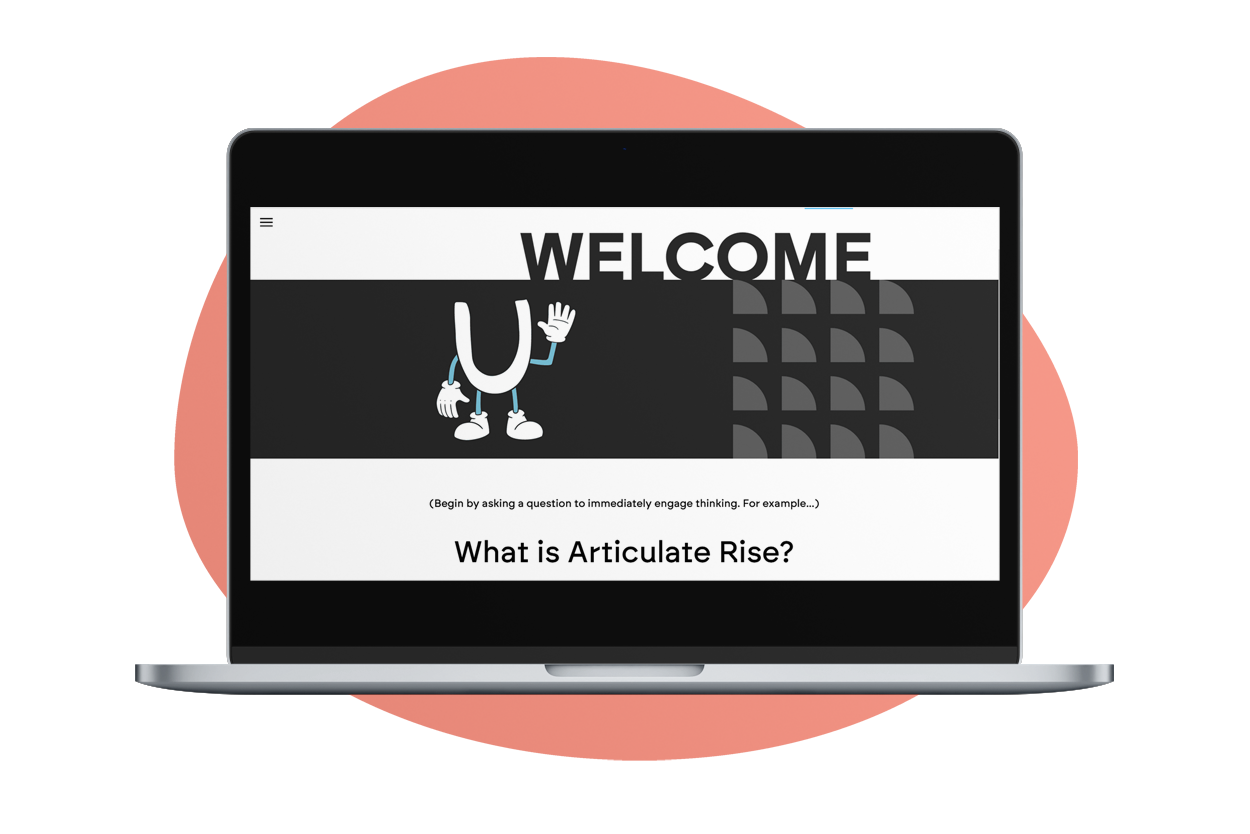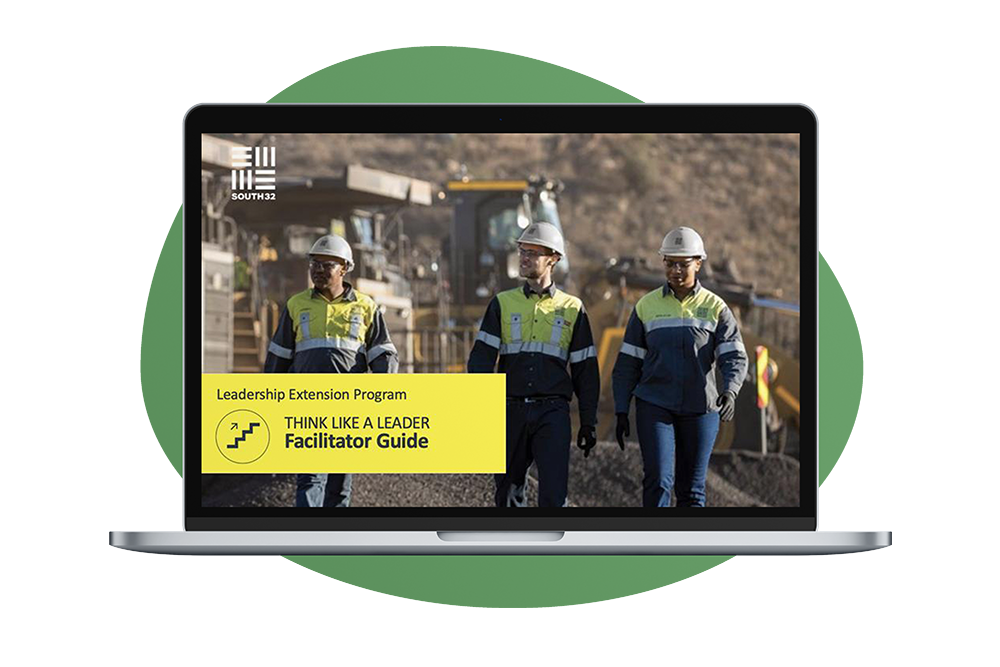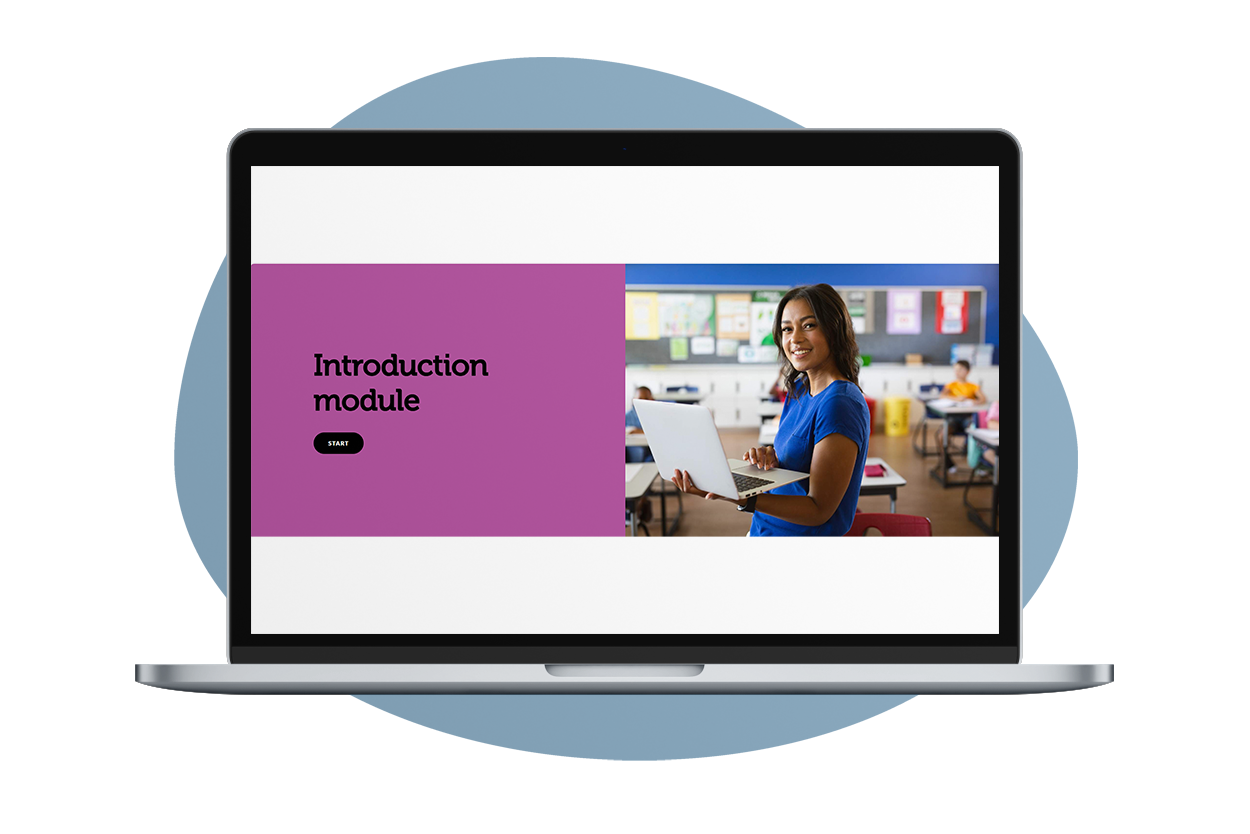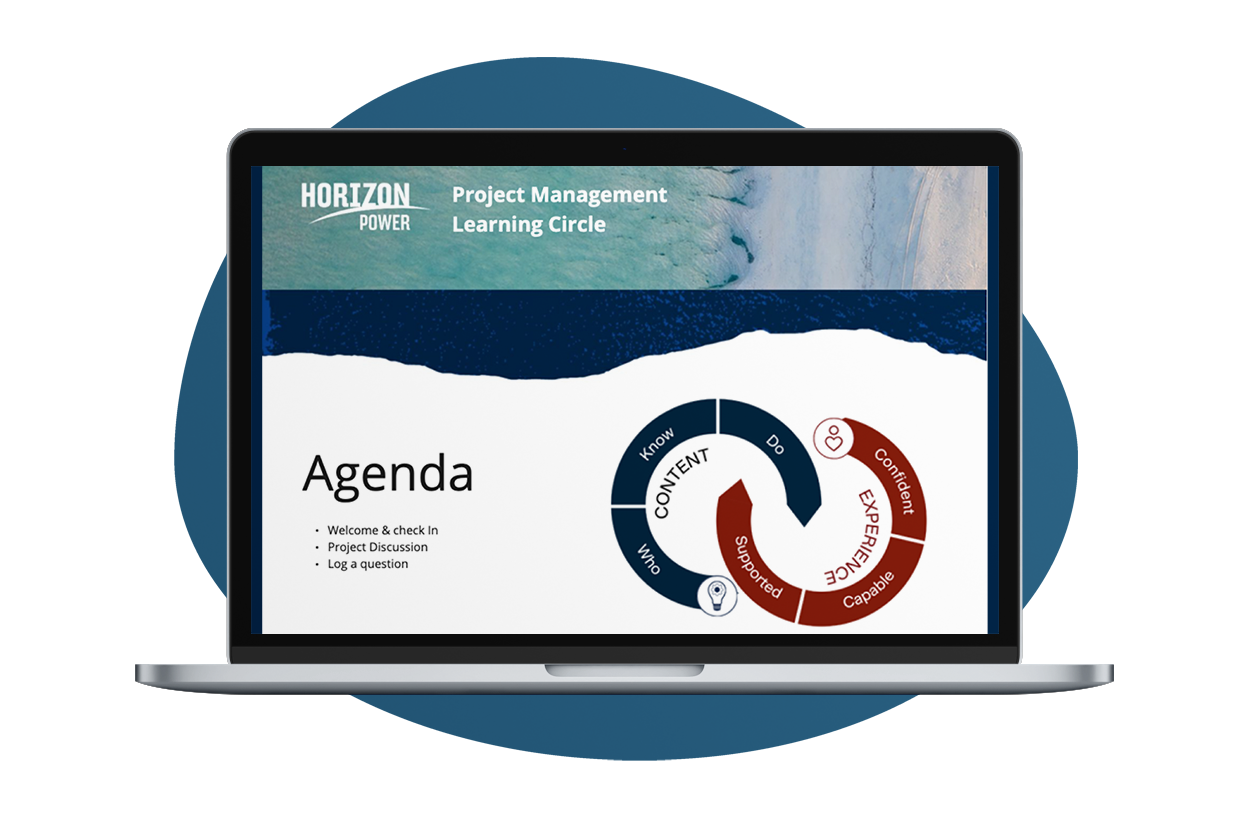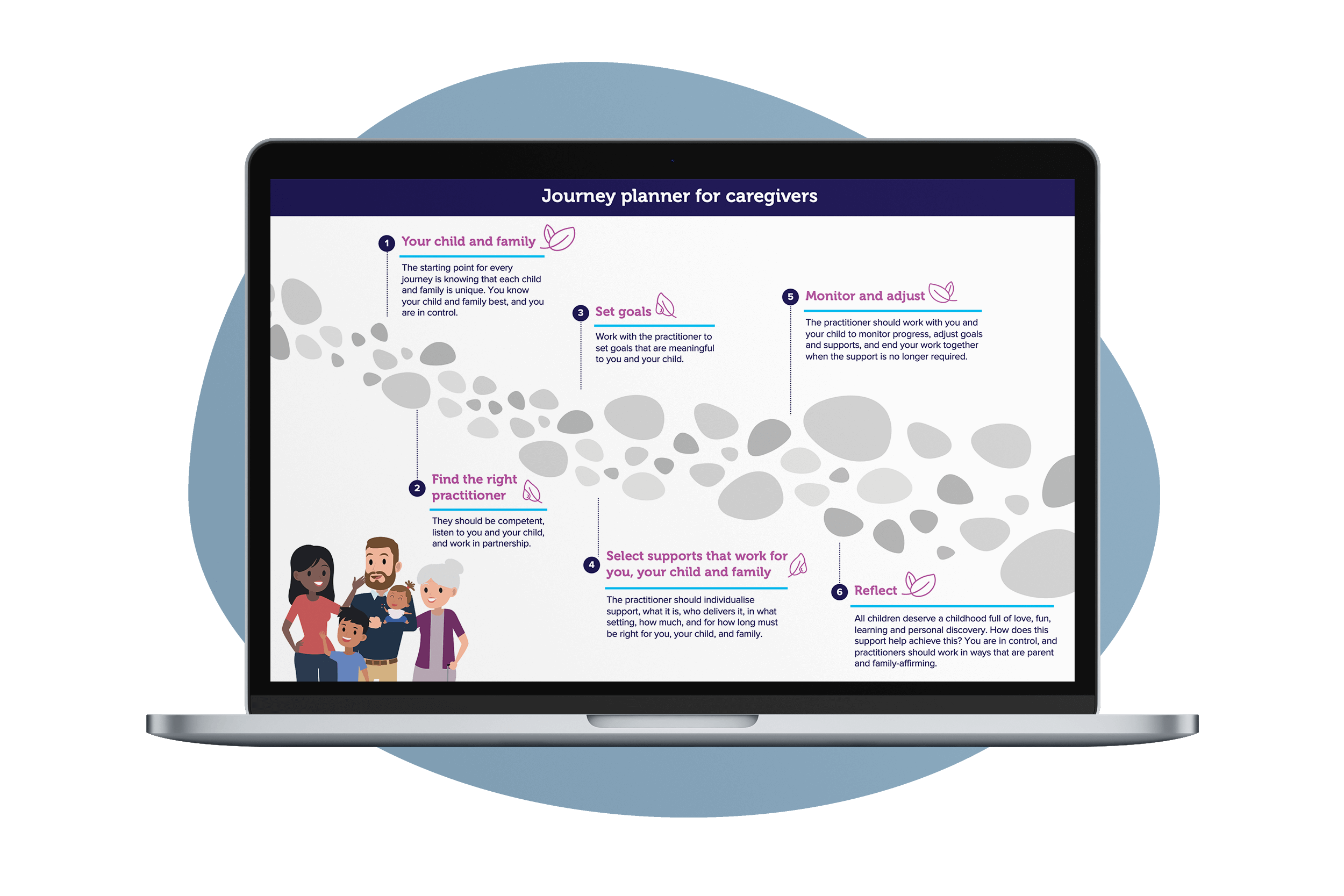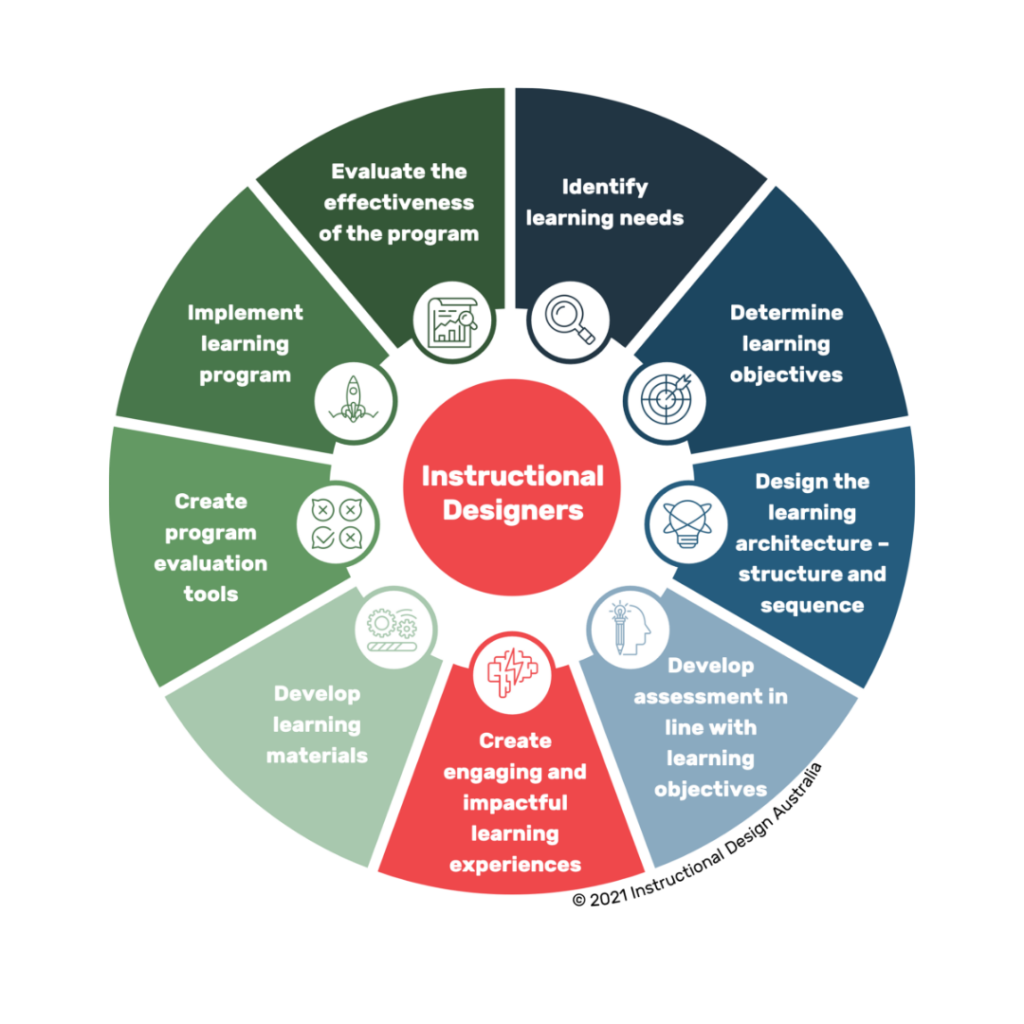Learning design and
instructional design
We create all things learning
We don’t do boring learning design. And neither should you.
Let’s be honest: workplace training has a reputation problem. We’ve all endured the soul-crushing PowerPoint marathons, the cringy ice-breakers, and the one-size-fits-none content dumps that leave teams zoning out before the first coffee break
But what if training didn’t have to be this way?
We’ve flipped the script; transforming compliance checkboxes into dynamic learning journeys. By prioritising learner-centred experiences, measurable outcomes, and agile delivery methods, we turn boring sessions into ones to be remembered – and applied!
Learning design services

LEARN
Learn how to design learning that sticks, with step-by-step guidance, ready-to-use templates, and personalised coaching. Enrol in our Professional Certificate in Instructional Design.

eLEARNING
Designed for busy brains and real results – our eLearning is lean, relevant, and built to stick.
It grabs interest fast, keeps curiosity fired up, and leaves passive learning in the dust.

LEARNING PROGRAMS
End-to-end programs designed with your context in mind. Targeted, tailored, and ready to roll – we turn performance gaps into clear, capable action through smart learning design.
We bridge the gap between where learners are and where they need to be.
We get to the heart of what learners need, and design from there. Our method turns insight into action and content into capability.
Here’s what it looks like to design learning that actually moves the needle.

Determining what the learner needs to know or do as a result of the instruction.
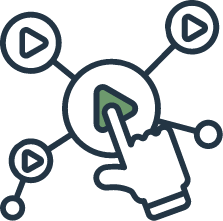
Defining clear, measurable outcomes that guide the learning process.

Delivery mode selection
Choosing between in-person, online, blended or other instructional mediums.

Deciding on teaching methods that cater to various learning styles, be it through lectures, discussions, hands-on activities or digital modules.

Content organisation
Structuring and sequencing information logically and effectively.
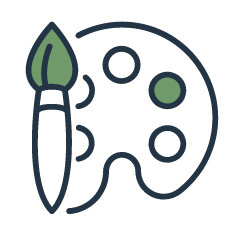
Assessment design
Creating tools to measure the effectiveness of the instruction and the learner’s understanding.

Stakeholder Collaboration
Working with SMEs, leaders, end-users, and technical teams to co-design effective, accurate, and aligned programs.

Gathering feedback post-instruction to refine and improve the content.









Designed to shift mindsets, build skills, and drive action.
We pick the learning strategies that fit your program, your people, and how they learn best.
Practical. Targeted. Built to stick.
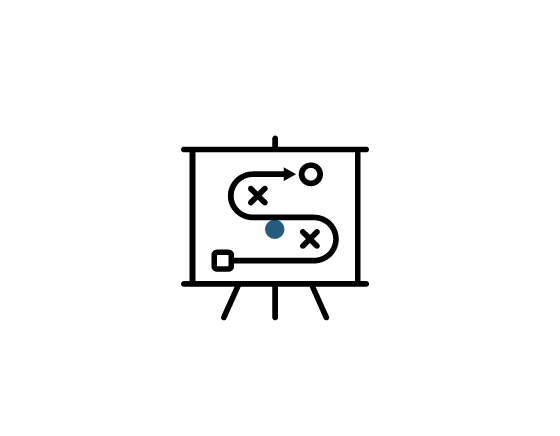
Action planning
Setting specific steps to achieve learning goals, ensuring progress and accountability.

Appreciative inquiry
Focusing on strengths to empower and foster positive growth in learners.

Brainstorming
Encouraging free-thinking and creativity to generate diverse ideas.

Case studies
Analysing real-world or real-to-life scenarios to apply theoretical knowledge practically.

One-on-one guidance, fostering personal growth and skill development.

Offering specific advice for improvement, enhancing performance and understanding.

Critical incident analysis
Reflecting on significant events to learn and adapt for future situations.

Critical reflection
Examining personal experiences and beliefs, promoting deeper understanding and encouraging growth.
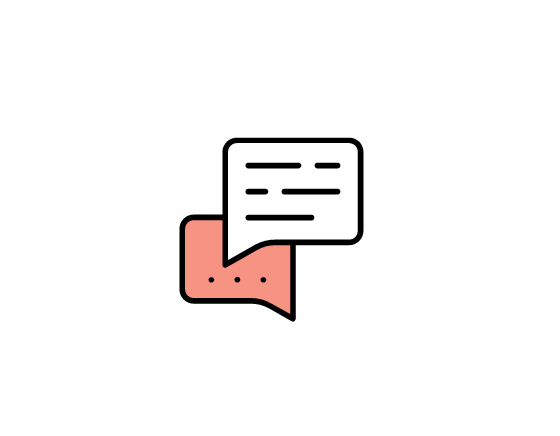
Debates
Engaging in structured arguments to develop critical thinking and perspective-taking.
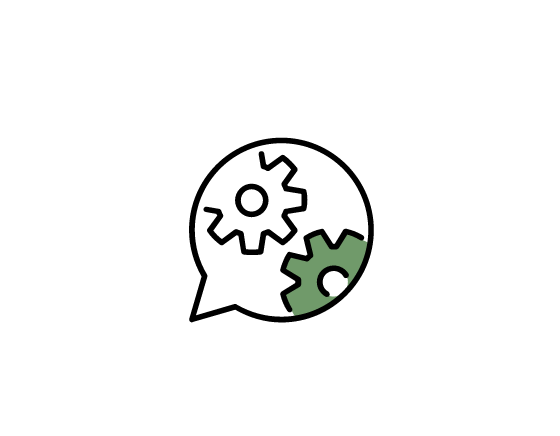
Guided discussions
Facilitated conversations that deepen understanding and explore varied viewpoints.

Knowledge checks and quizzes
Assessing understanding and retention, and identifying areas for improvement.

Multimedia (videos, podcasts, infographics)
Engaging visual and audio content; enhancing retention and catering to different learning styles.
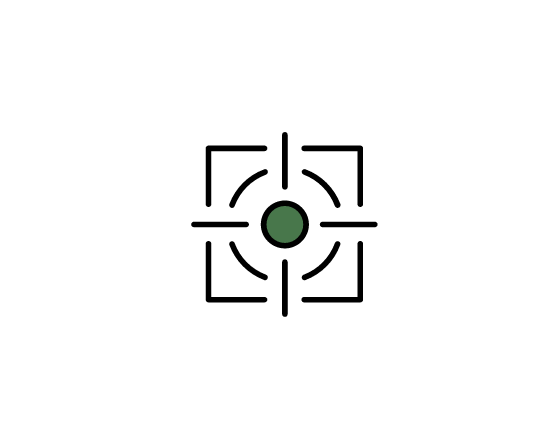
Problem-based learning
Tackling real-world problems to develop problem-solving and analytical skills.
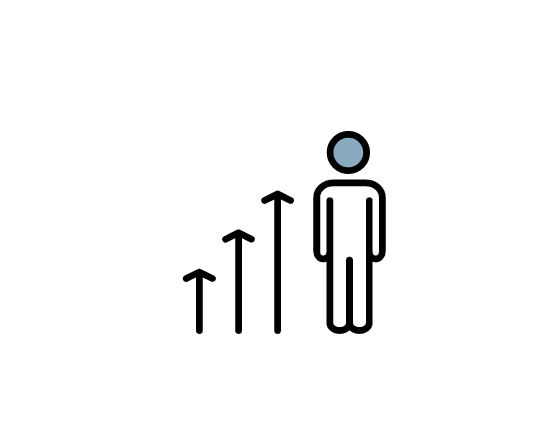
Self-paced extension activities
Providing flexibility for learners to delve deeper at their own pace.

Shared learning
Collaborative knowledge exchange, enhancing understanding through peer perspectives.

Simulations
Immersive scenarios that allow practice and decision-making in a controlled environment.

Site visits
Experiencing real-world settings to enhance contextual understanding and practical application.
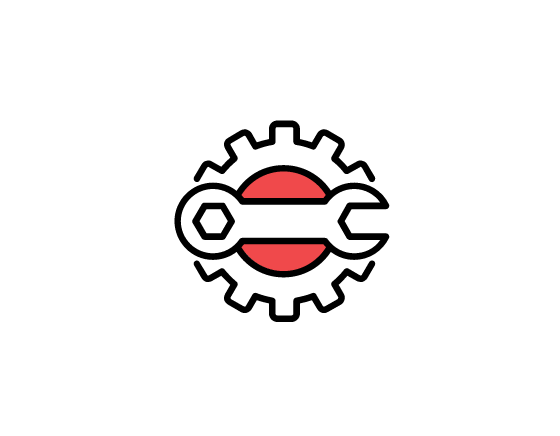
Skills practice
Engaging in hands-on activities to hone specific skills through application and improve proficiency.
Our learning design process - from idea to impact.
Our learning design approach is simple, strategic and proven. We use the ADDIE model to turn smart ideas into learning that delivers real change.
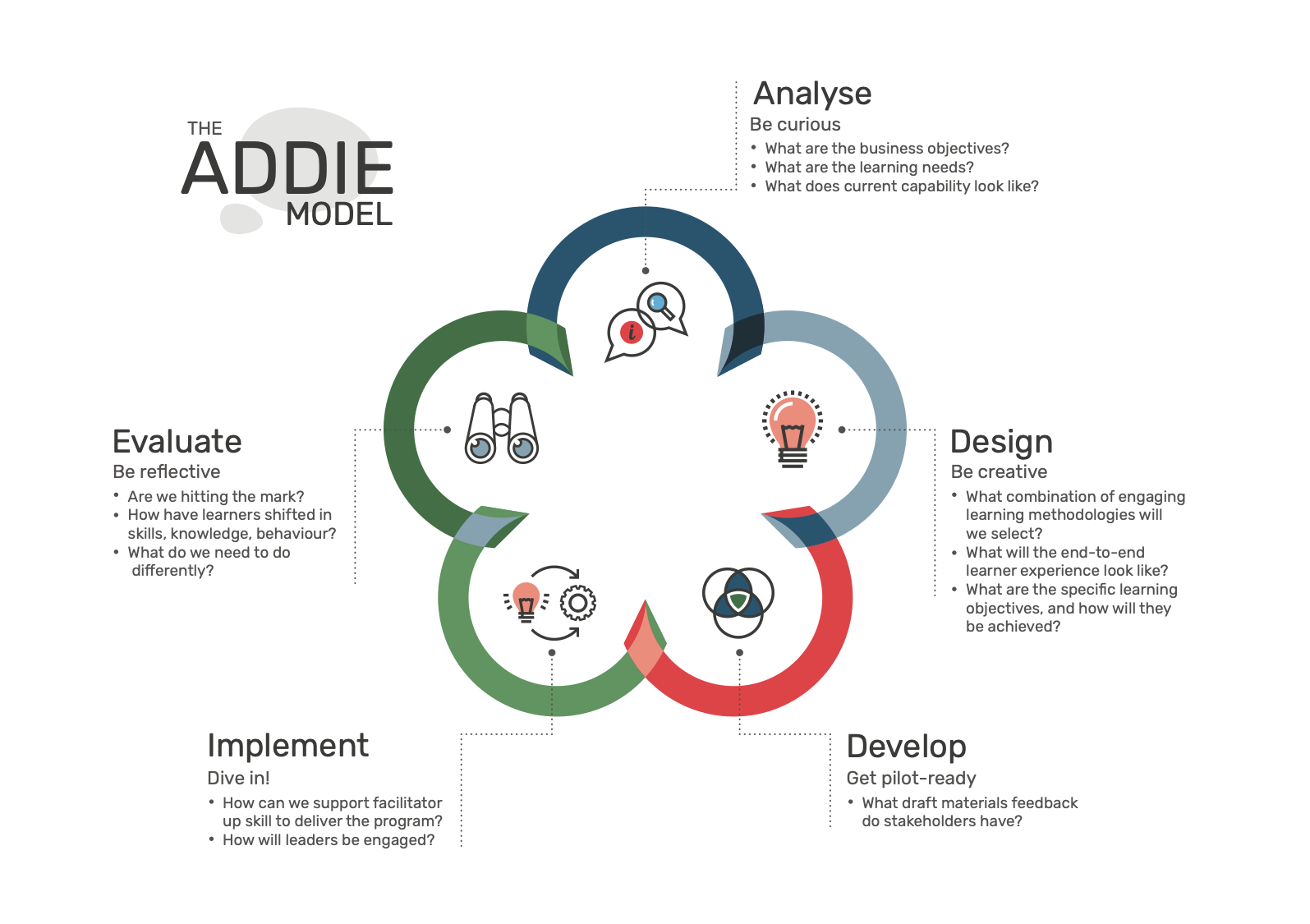
Who do we work with?
We’ve supported hundreds of teams with their learning design needs.


Learning design
Case studies
Serious about impact? So are we.
Let's connect!
Learning design
faqs
The investment for our instructional design services is shaped by a combination of factors tailored to meet your unique requirements. Among these considerations are:
- Research needs: The volume and depth of content required by us to develop.
- Deliverables: Outputs like videos, podcasts, and graphics can vary in production costs.
- Reviews cycles: The more feedback loops, the finer the end-product. This iterative approach can impact the timeline and cost.
- Program length: Longer courses typically demand more resources.
- Interactivity: Advanced interactive features may have added costs.
Accessibility: Ensuring universal access can add design layers.
An instructional designer (ID) is a professional who designs, develops, and delivers educational and training materials. Here’s a closer look at their role:
- Learning needs analysis: IDs assess and identify the learning needs of a target audience, often collaborating with subject matter experts (SMEs).
- Learning objectives: They define clear, actionable objectives to guide the content and ensure measurable outcomes.
- Content creation: IDs design and develop materials, which can range from traditional course outlines to multimedia eLearning modules.
- Learning theory application: They apply educational theories and principles to create effective and engaging learning experiences.
- Assessment design: IDs craft evaluations and assessments to measure the effectiveness of the learning experience.
- Feedback integration: Post-assessment, they refine and adjust content based on feedback and performance metrics.
- Technology utilisation: Many IDs use Learning Management Systems (LMS) and eLearning authoring tools to deploy and track online training.
- Continuous improvement: IDs stay updated with the latest educational trends, tools, and technologies to ensure that content remains relevant and engaging.
In essence, instructional designers bridge the gap between content experts and learners, ensuring that information is communicated effectively, engagingly, and in a manner conducive to optimal retention and application.
Instructional design is the systematic process of creating educational and training materials using research-backed principles to ensure effective learning. It’s crucial because it ensures that content is tailored to meet learners’ needs, making training more efficient, engaging, and impactful. Through instructional design, we ensure that learners not only absorb information but can also apply it in real-world contexts.
Our instructional design process typically follows the ADDIE model, which includes Analyse, Design, Develop, Implement, and Evaluate. Initially, we analyse your training needs, learner demographics, and desired outcomes. Next, we design a blueprint for the program, outlining its structure, content, and interactions. During the develop phase, we create the actual course materials, which might include multimedia elements, quizzes, and interactive modules. We can assist in piloting and implementing the course, ensuring it integrates seamlessly with your platforms or LMS. Finally, we evaluate the course’s effectiveness, gathering feedback for continuous improvement.
We specialise in a variety of training modalities including eLearning modules, classroom-based training, blended learning solutions, mobile learning, and microlearning nuggets. Our team is adept at understanding your specific needs and recommending the most suitable format, or a combination of formats, to achieve the desired learning outcomes.
Recognising the diversity of learners is central to our design philosophy. We start by conducting a thorough audience analysis to understand their backgrounds, prior knowledge, learning preferences, and potential barriers to learning. Based on this, we craft content that is relatable, inclusive, and accessible. This might include creating diverse scenarios, offering content in multiple languages, ensuring accessibility for differently-abled learners, and providing supplemental resources for those who want to dive deeper. Our goal is to create a learning experience that resonates with every individual.
Yes, we ensure our courses are compatible with a wide range of Learning Management Systems (LMS). We develop content using standard eLearning specifications like SCORM and xAPI, making it easy to integrate with popular LMS platforms like Talent LMS, LearnWorlds, Moodle, Blackboard, Canvas, Totara, and many others. If you have a specific LMS in mind, let us know, and we’ll ensure seamless integration.
Our commitment to quality is paramount. We adopt a multi-layered approach to ensure course effectiveness. This includes formative assessments during the course, feedback loops with stakeholders during the design and develop phases, QA processes within our team and thorough testing on multiple devices/platforms. Post-course, we encourage summative evaluations and surveys to gather learner feedback. Data analytics from the LMS can also provide insights into course effectiveness, allowing for continuous improvements.
The timeline for course development can vary based on several factors including the complexity of the content, the chosen instructional methods, the amount of interactivity, and the overall course length. On average, a one-hour eLearning module might take anywhere from 4-6 weeks from project kick-off to final product handover. However, we always work closely with clients to meet any specific deadlines and can adjust our processes to accommodate urgent timelines if necessary.
We’re versatile in our approach. Whether it’s designing a course from scratch or updating and enhancing existing courses, we have the expertise to assist. We understand that content evolves, and we’re here to help ensure your courses remain current, engaging, and effective for learners.
Yes, we design courses with localisation in mind. We work with a team of expert translators to ensure content accuracy and cultural relevance in multiple languages. We ensure that graphics, audio, and other multimedia elements are also tailored for a global audience. If you have specific languages in mind, let us know, and we’ll make it happen.
Click on the links below to learn about instructional design:
- What is Instructional Design?
- What Do Instructional Designers Do?
- Understanding Instructional Design
- The Science of Learning
- How to Become an Instructional Designer
- Learn more about eLearning Development
- What Do Instructional Designers Do?
- Do You Need An Instructional Design Degree?
- What are the differences between Educational Design, Learning Design and Instructional Design?
- First Principles of Instruction
- The Instructional Design Method
- Learning Science
- Why Poor Training Costs More Than You Think And How Better Strategy Fixes It
- What is problem-based learning (PBL)
Click one of the links below to learn more about eLearning:
- eLearning: Dos and Dont’s
- What eLearning Developers do
- How much does eLearning cost?
- How-To: Design for Online Courses
- The Learning Benefits of Video and Multimedia
- Shoot Your Own Video
- The Role of eLearning in Adult Education: Pros, Cons, and Best Practices
- 5 reasons to incorporate eLearning in a face-to-face program
- How to Create Interactive eLearning Content for Adult Learners
- Making eLearning Accessible
- How To Sell eLearning Courses
- Making eLearning Accessible
- Do You Want to Create an Online Course or eLearning?
- Universal Learning Design in Instrutional Design
Learning design services

LEARN
Learn how to design learning that sticks, with step-by-step guidance, ready-to-use templates, and personalised coaching. Enrol in our Professional Certificate in Instructional Design.

eLEARNING
Designed for busy brains and real results – our eLearning is lean, relevant, and built to stick.
It grabs interest fast, keeps curiosity fired up, and leaves passive learning in the dust.

LEARNING PROGRAMS
End-to-end programs designed with your context in mind. Targeted, tailored, and ready to roll – we turn performance gaps into clear, capable action through smart learning design.
Learning design
blog
Who are we?
We’re curious crafters of meaningful and impactful learning experiences. Leaders in the world of instructional design since 2009, we are proud to have partnered with key Australian organisations across diverse industries. More than learning designers; we’re capability shifters.
We’re part of the Hungry Minds Group.







